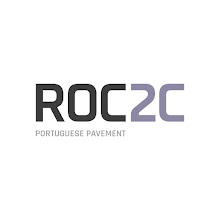It is said that the picturesque village of Nazaré got its name from a statue of the Virgin Mary brought to town from Nazareth by a monk in the 4th century.
Today it is Portugal's most famous fishing village, having always drawn visitors to its beach and genuinely colorful life.
Until not too long ago, fishermen were still seen using oxen to pull their brightly painted boats from the ocean and even today many locals still wear their characteristic traditional costumes -- the fishermen have check shirts and trousers, and the women wear several layers of petticoats. The fishing boats are Phoenician in design with bright colors and eyes painted on the vessels, supposedly with the magical power to avert storms.
High above the town is Sitio, reached by a funicular that climbs 110m (360ft). All of Nazaré can be seen from here, and across the square is the 17th century Nossa Senhora da Nazare Church with two Baroque belfries and 18th century tiles depicting Biblical scenes. It also contains a revered image of Our Lady of Nazareth that is taken down to the sea in a traditional procession every September.
Facing it is the Capela da Memoria, a 12th century chapel built to commemorate a miracle: while in pursuit of a white deer (said to be the devil in disguise), a nobleman was saved when the Virgin Mary stopped his horse just in time from falling off a cliff that was shrouded in mist.
The tiles inside the chapel depict the legend, and outside is a pillar with an inscription commemorating Vasco da Gama's visit here after his voyage to India, giving thanks to Our Lady of Nazareth for his safe return.
Thirteen kilometers (8 miles) south of town is SÃO MARTINHO DO PORTO, a sandy beach popular with families for its calm shallow waters. Five kilometers (3 miles) farther south, is theVisigothic Church of São Gião.
There are regular buses connecting Nazaré to Lisbon, Alcobaça, and Leiria.
Text: http://www.golisbon.com
Photos: Celso Gonçalves Roc2c
Today it is Portugal's most famous fishing village, having always drawn visitors to its beach and genuinely colorful life.
Until not too long ago, fishermen were still seen using oxen to pull their brightly painted boats from the ocean and even today many locals still wear their characteristic traditional costumes -- the fishermen have check shirts and trousers, and the women wear several layers of petticoats. The fishing boats are Phoenician in design with bright colors and eyes painted on the vessels, supposedly with the magical power to avert storms.
High above the town is Sitio, reached by a funicular that climbs 110m (360ft). All of Nazaré can be seen from here, and across the square is the 17th century Nossa Senhora da Nazare Church with two Baroque belfries and 18th century tiles depicting Biblical scenes. It also contains a revered image of Our Lady of Nazareth that is taken down to the sea in a traditional procession every September.
Facing it is the Capela da Memoria, a 12th century chapel built to commemorate a miracle: while in pursuit of a white deer (said to be the devil in disguise), a nobleman was saved when the Virgin Mary stopped his horse just in time from falling off a cliff that was shrouded in mist.
The tiles inside the chapel depict the legend, and outside is a pillar with an inscription commemorating Vasco da Gama's visit here after his voyage to India, giving thanks to Our Lady of Nazareth for his safe return.
Thirteen kilometers (8 miles) south of town is SÃO MARTINHO DO PORTO, a sandy beach popular with families for its calm shallow waters. Five kilometers (3 miles) farther south, is theVisigothic Church of São Gião.
There are regular buses connecting Nazaré to Lisbon, Alcobaça, and Leiria.
Photos: Celso Gonçalves Roc2c
















Comentários
Enviar um comentário